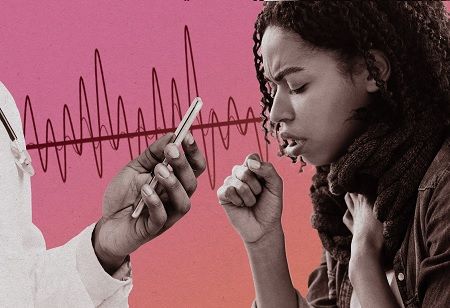
Indian Startup Teams with Google to Detect Tuberculosis Using AI Analysis of Cough Sounds

 Google has announced a collaboration with Salcit Technologies, an Indian respiratory healthcare firm, to revolutionize the early detection of tuberculosis (TB) through artificial intelligence (AI). This partnership leverages the innovative Swaasa platform developed by Salcit, which uses AI to analyze cough sounds and assess lung health. The integration of Google’s HeAR (Health Acoustic Representations) AI model aims to enhance the accuracy and effectiveness of TB diagnostics, marking a significant advancement in health technology.
Google has announced a collaboration with Salcit Technologies, an Indian respiratory healthcare firm, to revolutionize the early detection of tuberculosis (TB) through artificial intelligence (AI). This partnership leverages the innovative Swaasa platform developed by Salcit, which uses AI to analyze cough sounds and assess lung health. The integration of Google’s HeAR (Health Acoustic Representations) AI model aims to enhance the accuracy and effectiveness of TB diagnostics, marking a significant advancement in health technology.
On August 20, Google unveiled its commitment to this collaboration, highlighting the potential of AI in transforming respiratory healthcare. Swaasa will utilize Google’s HeAR model, which was released in March, to refine its tuberculosis detection capabilities. HeAR, a bioacoustic foundational model, has been trained on an extensive dataset comprising 300 million pieces of audio data, including approximately 100 million cough sounds. This training enables the model to detect subtle variations in cough patterns, which can be crucial for diagnosing tuberculosis with greater precision and speed.
Shravya Shetty, Director and Engineering Lead at Google Health, explained that HeAR’s ability to discern minute differences in cough acoustics could significantly enhance diagnostic accuracy. “By analyzing patients’ coughs, HeAR can potentially aid in triaging patients much earlier in their healthcare journey”, Shetty noted during a select media roundtable. This early identification could help prioritize follow-up testing, enabling more timely confirmation of tuberculosis cases.
HeAR is designed not only for tuberculosis but also as a versatile tool for a range of health-related acoustic analyses. Its foundation allows researchers to develop models that can listen to various sounds and flag early signs of different diseases. Shetty emphasized that HeAR could be fine-tuned for specific health-related sounds, making it a valuable asset for future medical and audio analysis.
Researchers interested in utilizing HeAR can access the API through Google Cloud, which is expected to facilitate the development of future diagnostic and monitoring tools. This initiative aligns with Google’s broader mission to advance health outcomes globally through innovative technology.
This partnership with Salcit Technologies follows a series of health-focused collaborations by Google. Earlier in the year, Google joined forces with Apollo Radiology International (ARI) to enhance disease detection in India. ARI is deploying Google’s AI models to improve outcomes for tuberculosis, lung cancer, and breast cancer patients, with a plan to offer three million free AI-powered screenings over the next decade.
In another significant development, Google is working with Taiwan’s Chang Gung Memorial Hospital (CGMH) to create AI models for detecting early signs of breast cancer through ultrasound images. This initiative aims to overcome the limitations of traditional mammography, which often faces cost and accessibility barriers, particularly in low-resource settings. Ultrasound, being more affordable and portable, presents a viable alternative for primary screening, especially for younger women and those with dense breast tissues.
Additionally, Google is collaborating with Cochlear and Australia’s National Acoustics Laboratory on the Australian Future Hearing Initiative. This project explores new AI applications to enhance hearing devices, making them more personalized and effective in noisy environments. The initiative aims to improve sound identification, categorization, and segregation, offering a more natural listening experience for users.
Through these partnerships and innovations, Google continues to push the boundaries of AI in healthcare, striving to make significant strides in disease detection, diagnosis, and management on a global scale.